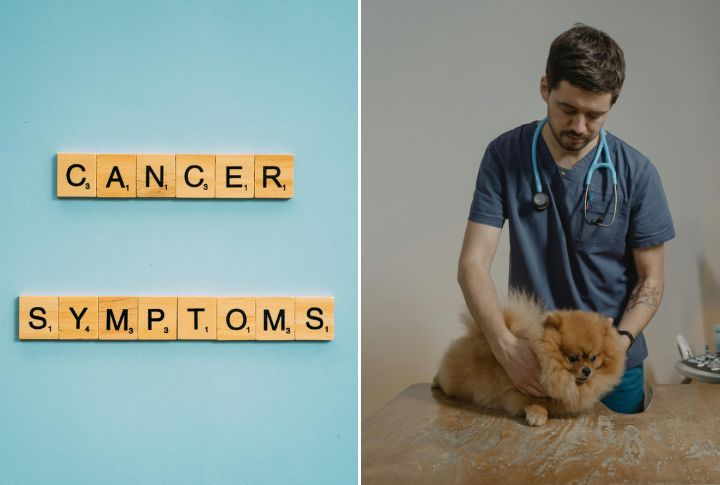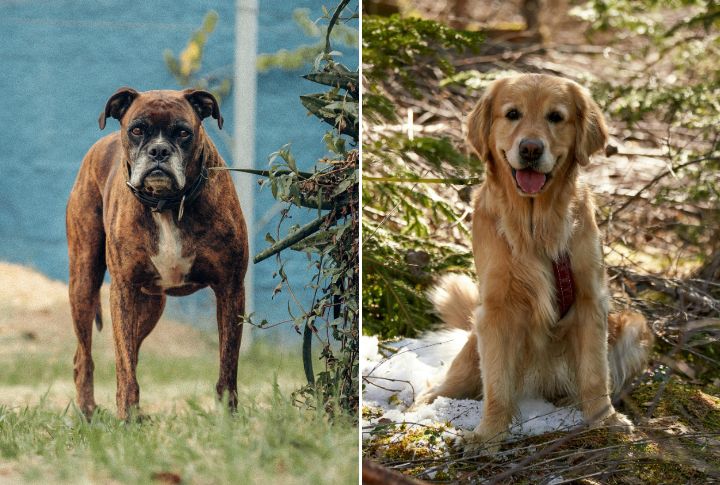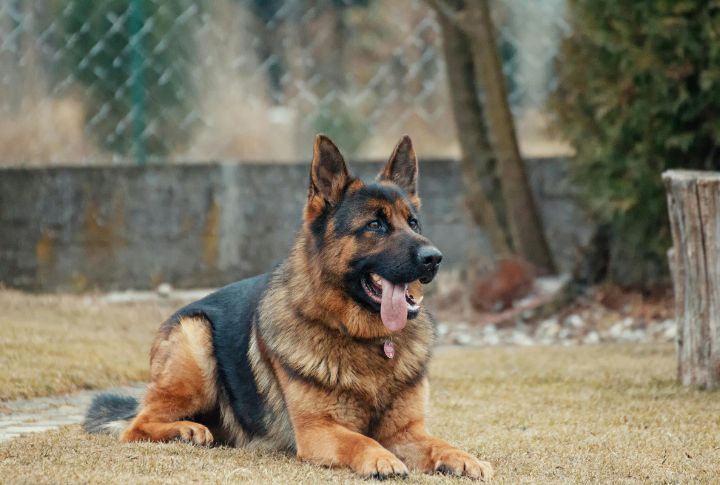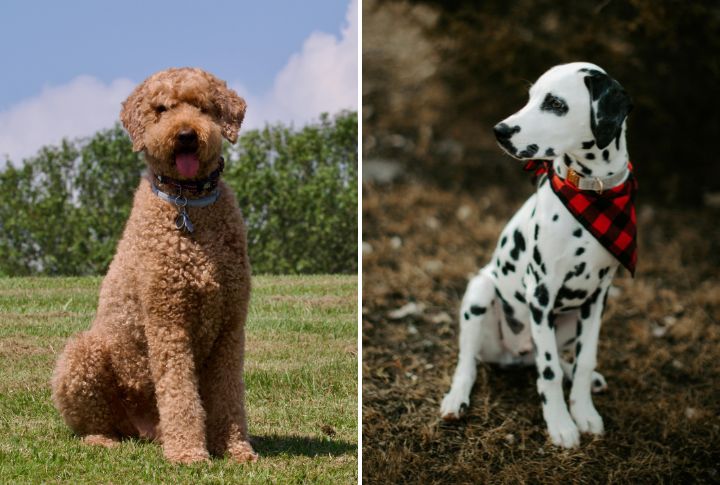15 Cancers Common in Dogs and the Breeds Most at Risk

It’s beautiful to have dogs as pets and have them live for years. However, cancer in dogs can be a big issue for many dog owners because it’s the leading cause of death in dogs. It’s worth nothing to know that certain breeds are more prone to certain cancers than others. So, understanding each type of canine cancer and knowing which breeds are more at risk can help dog owners treat their pets.
Lymphoma (Cancer of the Blood)

Lymphoma is a cancer of lymphocytes that develops in the white blood cells. It often affects the lymph nodes and bone marrow. Common symptoms include loss of appetite, enlargement of the lymph nodes, and difficulty in breathing. Lymphoma is common in Boxers and Golden Retrievers. If the symptoms are detected early, owners have the best chance of getting their dogs back to health.
Osteosarcoma (Cancer of the Bone)

Osteosarcoma is a common bone cancer that occurs in dogs. Large dogs like Rottweilers and Great Danes are highly prone to this type of cancer. Osteosarcoma typically affects the legs and can lead to fractures or limb pain. Other symptoms include swelling of the bone tumor and excessive fatigue. If a dog is diagnosed with Osteosarcoma, amputation followed by chemotherapy is done to keep the dog alive.
Hemangiosarcoma (Cancer of the Blood Vessels)

A common cancer in dogs that accounts for 5% of cases is Hemangiosarcoma. This cancer originates in the blood vessels and is commonly found in the spleen, liver, and heart. It can (obviously) develop anywhere as blood vessels run through the body. Hemangiosarcoma is an aggressive cancer that can cause sudden internal bleeding without warning. German Shepherds are notably susceptible to this life-threatening cancer.
Mast Cell Tumors (Cancer of the Skin)

Mast Cell Tumors (MCT) can develop in any body organ but are mostly found on the skin. Big dog breeds such as Boxers and Bulldogs are highly prone to Mast Cell Tumors. Studies have shown that Boxers, in particular, are highly susceptible to this type of cancer. If a dog is diagnosed with this cancer, carrying out early surgical removal may be the best way to treat the disease and keep the dog alive.
Melanoma (Cancer of the Skin)

Melanoma occurs when tumors form in the body’s pigment cells. It’s a common cancer that affects dogs’ skin, mouth, or toenails. The most dangerous form of Melanoma occurs in the oral cavity. Scottish Terriers are particularly prone to this type of cancer, and surgery might be necessary in many cases to treat it. This cancer is one of the most deadly cancers in dogs.
Transitional Cell Carcinoma (Cancer of the Bladder)

Transactional Cell Carcinoma is a type of cancer that affects the bladder and urinary tract. While it’s common in Scottish Terriers, this cancer affects mostly female dogs. The symptoms of Transitional Cell Carcinoma are easy to detect from the urinating pattern of dogs. It includes difficulty urinating, blood in the urine, and frequent urination. Early diagnosis is crucial to manage it.
Soft Tissue Sarcoma (Cancer of the Tissues)

Treating a dog diagnosed with soft tissue sarcomas is very challenging. These types of cancers in dogs are special cancers that occur in the connective tissues such as muscles, fat, and blood vessels. These tumors can be found anywhere on the body and tend to be invasive. Dog breeds like the Bernese Mountain Dogs are especially prone to canine soft tissue sarcoma, but it can occur in other breeds, too.
Thyroid Carcinoma (Cancer of the Thyroid)

Thyroid cancer affects the thyroid glands located in the neck. Symptoms include weight loss, increased appetite, and changes in behavior. Most dogs are prone to Thyroid Carcinoma, but Beagles can be at risk of developing this canine cancer. The major option for treatment is to use radiation or carry out surgery to deal with the cancer, even if the whole process is stressful.
Squamous Cell Carcinoma (Cancer of the Skin)

This type of cancer affects the skin, mouth, and nails and is more common in areas exposed to the sun. Breeds like Standard Poodles and Dalmatians are at higher risk. The reason is mostly the breeds’ light coats. It’s a dangerous cancer that can kill dogs quickly, no matter their age. Hence, early surgical removal is the primary treatment to get rid of this canine cancer.
Mammary Gland Tumors (Cancer of the Breast)

Mammary tumors are the canine equivalent of breast cancer and are more common in unspayed female dogs. This is a type of dog that has not had its reproductive organs removed. Poodles and Dachshunds are notably prone to these tumors. If a dog is diagnosed with this type of cancer, it has to be quickly addressed. And early spaying can most definitely reduce the risk of developing mammary gland tumors.
Brain Tumors (Cancer of the Brain)

Dog owners dealing with dogs with brain tumors get easily frustrated. Brain tumors are often detected through symptoms like seizures, disorientation, and changes in behavior. Retriever dogs are highly prone to this canine cancer, and early detection followed by surgery can improve the prognosis.
Liposarcoma (Cancer of the Fatty Tissues)

Liposarcomas are rare but malignant tumors of the fatty tissue. The cancer grows slowly but can spread to other organs. Liposarcoma is dangerous because it can also grow anywhere in a dog’s body. Labrador Retrievers and Beagles are highly prone to this type of cancer, so owners must take their dogs for early treatment where the tumor gets removed entirely.
Perianal Adenoma (Cancer of the Anus)

When Perianal Adenoma shows up, it appears to grow slowly. This type of cancer affects the perianal glands around the anus and is more common in unneutered males. Cocker Spaniels are particularly vulnerable, and neutering is often recommended to prevent recurrence after tumor removal.
Histiocytic Sarcoma (Cancer of the Immune System)

Histiocytic sarcoma is an aggressive cancer that affects the immune system and can be found in various organs. If your dog doesn’t feel like eating and it’s also losing weight, there’s a chance it’s suffering from Histiocytic Sarcoma. Bernese Mountain Dogs and Flat-Coated Retrievers are highly susceptible to this rare cancer, which often requires aggressive treatment.
Hepatocellular Carcinoma (Cancer of the Liver)

This type of cancer affects the liver and can cause symptoms like jaundice, weight loss, and lethargy. It’s a dangerous cancer that affects both young and old dogs. Labrador Retrievers are more prone to developing liver cancer, and early detection with surgery can extend life expectancy.





